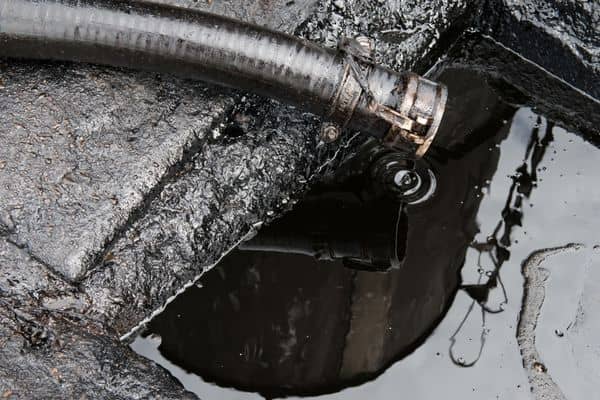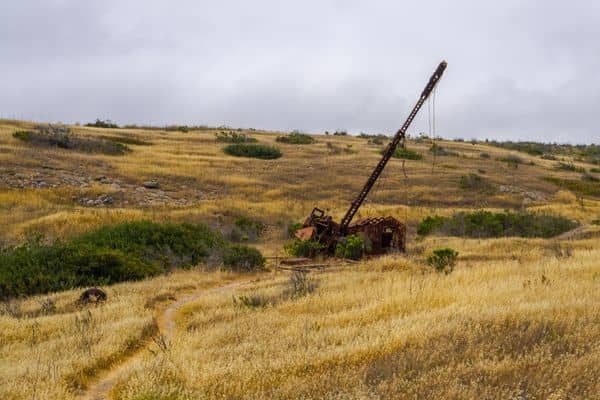In today’s world of high gas prices and climate concerns, it’s no wonder many consider the oil and gas industry a necessary evil. We all need oil and gas for everyday living, yet few like what it costs to acquire it. The toll it takes on the environment and our wallets has caused many to wonder about alternative sources of fuel. Can you blame them?
We certainly can’t. But we also think it’s a shame the industry has this reputation. Just because the oil production process has inefficiencies doesn’t mean we should condemn the industry and move on. Instead, why not consider how to improve the oil and gas industry to make it more productive, affordable and eco-friendly for all of us?
At Nano Gas™ Environmental, that’s exactly what we’ve done with our patented nanobubble solutions. Using this advanced technology, we’ve developed better ways to enhance the oil recovery process, reactivate abandoned wells and treat produced water. So, keep reading to discover how trillions of tiny bubbles are poised to transform the oil and gas industry.
The Oil and Gas Industry Faces Two Major Challenges
Before we look at how nanobubble solutions improve the industry, let’s examine the two biggest challenges facing the industry today:
- Oil and gas companies are struggling to survive and ensure profitability.
- Climate concerns demand more environmentally friendly techniques for obtaining oil and gas.
As we’ll see, the techniques we employ at Nano Gas™ Environmental address both challenges head-on.
1. The Struggle to Survive and Stay Profitable
The public perception of the oil and gas industry as a cash cow doesn’t line up with reality. The record-high gas prices we’ve seen recently fuel the perception that the industry is profiting off people’s misery. And while the high prices have helped companies turn a profit this past year, they don’t tell the whole story.
The truth is that oil companies have been hurting over the past decade because of fluctuating oil prices. When oil prices bottom out, it leaves companies vulnerable to losing money and going out of business. Therefore, oil and gas companies need every advantage they can get to withstand the inevitable downturn in oil demand.
2. The Demand for More Eco-Friendly Production Techniques
On top of the struggle to survive, oil firms also face mounting pressure from powerful forces to become eco-friendlier. Many politicians and public figures have raised concerns about the impact of fossil fuel production on the environment. And it has led many to consider abandoning the industry entirely for greener forms of energy.
Of course, the public’s need for oil is too great to abandon it altogether. Still, the industry needs to explore greener production techniques for the sake of the environment and good public relations. Like it or not, eco-friendliness needs to be a core value for any industry in this day and age, especially oil and gas.
A Superior Enhanced Oil Recovery Technique
The biggest question about how to improve the oil and gas industry is how to get more oil out of the ground safely. Indeed, enhanced oil recovery (EOR) is the name of the game. However, to this point, the EOR strategies companies have employed have left a lot to be desired.
The Problem with Standard EOR Techniques
The most common EOR methods involve chemicals and fracking, which pose significant threats to the environment. Furthermore, these techniques are limited in their ability to get as much oil as possible from a formation. Some methods, such as the use of harsh chemicals, also come with too high a price tag for smaller companies.
Why Nano Gas™ Nanobubbles are Better
Conversely, our nanobubble technology accesses oil from even the tiniest formations. The nanoscopic bubbles are so small that they are invisible to the naked eye. So, high concentrations of bubbles can easily infiltrate the small cracks.
When the tiny bubbles of gas are injected into the formation, they cling to the geology and kick the oil off it. In this way, the bubbles reduce the friction between the crude and the rock so that it’s much easier to pump out of the well. The bubbles also physically alter the viscosity of the oil so that it flows more readily. As a result, companies recover as much oil as possible when pumping oil.
Furthermore, since the bubbles are chemical-free, they pose virtually no threat to the environment. They are also inexpensive compared to most other EOR techniques.

A Better Solution to the Abandoned Oil Well Epidemic
Another reason the oil industry has a bad reputation is the millions of abandoned or shut-in oil wells in the United States. Unfortunately, many companies have gone out of business, leaving their wells uncapped or poorly sealed after they become unproductive. These wells leak toxic substances, such as arsenic and methane, into the environment, threatening the health of nearby people and animals.
A Costly Problem to Fix
Sometimes these wells remain uncapped because the companies can’t afford to cap them. Depending on their depth, some oil wells cost hundreds of thousands of dollars to fill safely.
The United States is currently footing the bill for many of these wells. Congress recently passed legislation to start capping the millions of abandoned wells across the country.
What’s a shame is many of these wells likely still have oil to offer, but traditional EOR techniques couldn’t get to it.
Nano Gas™ Provides a Better and More Affordable Alternative
The good news is the same nanobubble technology that makes active wells more productive also makes abandoned wells productive again!
At Nano Gas™ Environmental, we’re beginning to apply this technology to rehabilitate wells around the country. Our team will inspect each well to see if it’s viable for reactivation. And if there’s more oil down there, we’ll inject our nanobubbles to go get it.
Our mission is to make as many abandoned wells active again as possible. By doing this, we will make the oil industry more productive and improve its reputation. We’ll also protect the communities previously threatened by pollution and help curb the government spending required for capping wells.

A More Effective Way to Treat Produced Water
“What is produced water in the oil and gas production process?” Most people ask this because they’re unaware that the oil and gas industry pumps 12.6 billion gallons of polluted water out of the ground every day worldwide.
However, when they find out about this statistic, it’s not the best PR for the industry. And it only gets worse when they discover that most of this water is so salty it can’t be reused. Instead, companies dispose of it in underground wells, where it causes earthquakes.
Oil companies don’t much care for all this produced water either. The water often contains oil that could be recovered, but separating it from the water is too difficult and expensive. The standard way to do it is to build multi-million-dollar saltwater disposal wells, then treat the produced water with hazardous chemicals and inject it into the wells. And even this costly process isn’t the most effective at recovering oil from the water.
How Nanobubbles Solve the Produced Water Problem
Our nanobubble solutions represent a greener and more affordable way to recycle produced water and recover all the oil from it. When injected into produced water, the bubbles of gas cause the oil to rise to the surface while the water stays beneath. We then skim the oil off the surface and collect the cleaner water for reuse.
As a result, we’re able to recover 100% of oil from the produced water, which makes oil companies more productive and profitable.
We’re also able to treat the water so that it’s clean enough to be reused in the oil drilling process. One example of how nanobubbles do this is with an oxygen redox reaction, which chemically adds an electron to produced water contaminated by hydrogen sulfide. The addition of the electron changes the hydrogen sulfide molecule to a water molecule. The once toxic water is no longer toxic as a result.
Greener Technology and More Opportunities
By using nanobubbles to do this, we also eliminate the need for hazardous chemicals. Furthermore, we make expensive SWDs less necessary by making more produced water reusable.
Best of all, on the PR front, we make it so that oil companies don’t have to use as much fresh water in the production process. By recycling produced water, they help reduce water scarcity for the surrounding communities.
Beyond this, we’re also exploring the ability to recover valuable metals from produced water with our nanobubbles. Produced water often contains precious resources like lithium and copper, which our bubbles could help separate out and make available for reuse.
Interested in These Oil and Gas Industry Solutions?
We started this article by asking how to improve the oil and gas industry for people, oil companies and our environment. As you can see, our nanobubble solutions check off all those boxes. They make oil and gas more affordable for the public, increase the profitability of oil companies and are more eco-friendly than alternative techniques.
As you can imagine, demand for such a solution is high. But we need help to make our technology accessible to the public. You can support our mission by investing or connecting us with interested customers.
